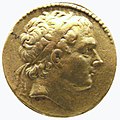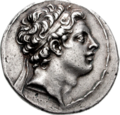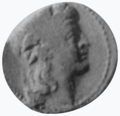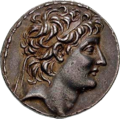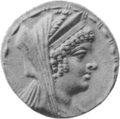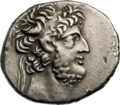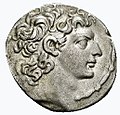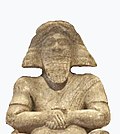
The title King of Syria appeared in the second century BC in referring to the Seleucid kings who ruled the entirety of the region of Syria. It was also used to refer to Aramean kings in the Greek translations of the Old Testament, mainly indicating the kings of Aram-Damascus. Following the defeat of the Ottoman Empire in World War I, the region came under the rule of France, the United Kingdom and Prince Faisal of Hejaz, who was proclaimed King of Syria on 8 March 1920. Faisal's reign lasted a few months before he was overthrown by France and the title fell out of use.
Contents
- Background
- List of monarchs
- Seleucid dynasty
- Non-dynastic
- Seleucid dynasty 2
- Ptolemaic dynasty
- Seleucid dynasty 3
- Ptolemaic dynasty 2
- Seleucid dynasty 4
- Artaxiad dynasty
- Seleucid dynasty 5
- Antonian dynasty
- Hashemite dynasty
- Biblical usage for Aramean kings
- Aramean kings referred to as "kings of Syria"
- See also
- Notes
- References
- Citations
- Sources
